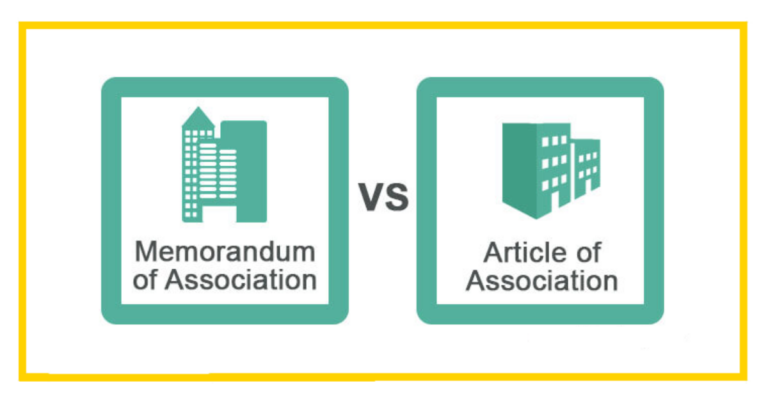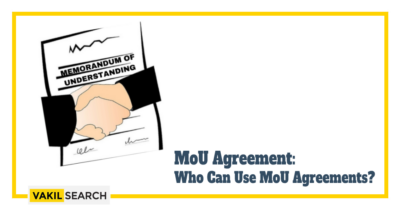Entering into Memorandums of Understanding (MoUs) can be a valuable tool for not-for-profit organizations to establish partnerships, collaborations, and agreements with other entities. However, it is essential to approach MoUs with careful consideration to ensure that the interests of the not-for-profit organisation are protected organisations.
A Memorandum of Understanding (MoU) is a common legal document used by non-profit organizations to outline the terms and conditions of a partnership or collaborative effort with other entities. While an MoU is intended to express mutual intent and understanding between parties, questions arise regarding its enforceability and the need for certain provisions to be legally binding. This extensive guide explores the appropriateness of non-enforceability, the potential for enforceable clauses within an MoU, and the essential components that should be covered to ensure a comprehensive and effective agreement for non-profit organizations.
What is an MoU for a Non-profit?
A Memorandum of Understanding (MoU) is a formal document that describes the mutual understanding and intent of two or more parties to cooperate or collaborate on a certain project or objective. An MoU is a preliminary agreement between two parties, usually a government agency, business, or another non-profit organization, that establishes the groundwork for a partnership, joint venture, or other types of collaboration in the context of not-for-profit organizations.
What is Important in a Not-For-Profit Organisation?
When signing MoUs, it’s crucial to keep in mind the special characteristics and factors that apply to not-for-profit organisations. Important elements for not-for-profit organizations include the following:
Mission and Purpose: The MoU should support the non-profit organisation’s goals and objectives and be in line with its mission and purpose.
Legal and Regulatory Compliance: A number of legal and regulatory obligations, such as those pertaining to tax exemption, fundraising, and governance, apply to not-for-profit organisations. These specifications should be followed and ensured by the MoU.
Resource Allocation: Not-for-profit organisations often have limited resources, including funding, staff, and time. The MoU should clearly define the resources required for the collaboration and ensure that they are feasible and realistic for the organization.
Stakeholder Involvement: Not-for-profit organisations have various stakeholders, including board members, donors, volunteers, beneficiaries, and the community. The MoU should consider the impact on these stakeholders and involve them in the decision-making process.
How Do You Write an MoU for a Non-Profit Organisation?
Writing an MoU for a not-for-profit organisation requires careful consideration and attention to detail. Here are some tips to keep in mind:
Clearly Defining the Parties: The parties to the Memorandum of Understanding should be identified clearly, together with their names, addresses, and legal standing.
Declare the Goals and Objectives: Clearly define the collaboration’s goals and objectives, as well as its purpose and scope.
Define duties and responsibilities: Make it clear what each party to the collaboration’s roles and responsibilities are, as well as what commitments, contributions, and expectations each side is expected to make.
Include timeframes and Milestones: Specify the collaboration’s timeframes and milestones, including due dates, deliverables, and performance metrics.
Think About Dispute Resolution: Include clauses for resolving disputes, such as arbitration or mediation, to handle any potential disputes that might develop throughout the cooperation.
Things to Consider When Entering into MOUs as a Not-for-Profit
When entering into MoUs as a not-for-profit organisation, it is essential to consider the following aspects:
Clarity and Precision: Ensure that the MoU is clear, precise, and free from any confusion to avoid potential misunderstandings or disputes in the future.
Legal Review: It is advisable to have the MoU reviewed by legal experts, and our Vakilsearch experts can help you with that, to ensure that it complies with relevant laws and regulations, protects the interests of the not-for-profit organization, and minimizes legal risks.
Alignment with Mission and Purpose: Ensure that the MoU aligns with the mission and purpose of the not-for-profit organization and supports its strategic goals and objectives.
Resource and Capacity Considerations: Evaluate the resources and capacity required for the collaboration and ensure that they are feasible and realistic for the not-for-profit organization. Consider factors such as funding, staff, time, and infrastructure.
Risk Management: Identify and assess potential risks associated with the collaboration, such as financial risks, reputational risks, and operational risks, and develop strategies to mitigate or manage them.
Communication and Collaboration: Establish clear channels of communication and mechanisms for regular collaboration and coordination among the parties involved in the MoU. This includes regular reporting, meetings, and updates to ensure that the collaboration progresses smoothly.
How MOUs Can Benefit Your Not-for-Profit?
MoUs can offer several benefits to not-for-profit organisations, including:
Enhanced Collaboration: MoUs provide a formal framework for collaboration, enabling not-for-profit organisations to work closely with other entities, such as government agencies, corporations, or other nonprofits, towards common goals and objectives.
Expanded Resources: MoUs can lead to the pooling of resources, such as funding, expertise, and networks, which can benefit not-for-profit organisations and enhance their capacity to achieve their mission and purpose.
Increased Credibility: Collaborating with reputable entities through MoUs can enhance the credibility and reputation of not-for-profit organisations, which can attract more donors, partners, and stakeholders.
Improved Efficiency: MoUs can streamline the coordination and collaboration process among different parties, leading to improved efficiency in implementing projects or initiatives.
Is Non-Enforceability Appropriate?
The question of whether an MoU should be enforceable depends on the nature of the collaboration and the intent of the parties involved. In many cases, MoUs are used to establish a framework for cooperation without imposing legally binding obligations. This non-enforceability can be appropriate when:
- Flexibility is Essential: MoUs allow parties to maintain flexibility and adapt to changing circumstances without being bound by rigid legal obligations.
- Preceding Formal Agreements: When parties intend to negotiate and execute a formal contract later, an MoU serves as a preliminary agreement outlining the key terms.
- Trust and Good Faith: MoUs are often used between parties with a strong relationship built on trust and good faith.
Should at Least Part of the MOU Be Enforceable?
While the non-enforceability of MoUs is often favored for its flexibility, parties may choose to make certain provisions enforceable to ensure commitments are upheld. Critical elements that parties might want to make enforceable include
- Confidentiality: If parties exchange sensitive information during the collaboration, they may want to enforce confidentiality obligations to protect proprietary data.
- Intellectual Property Rights: If the MoU involves the creation or use of intellectual property, enforceable clauses can safeguard ownership and usage rights.
- Termination Provisions: Parties may opt for enforceable termination provisions to establish grounds and procedures for ending the collaboration.
A Contract by Any Other Name… Would Still Be Enforceable
In some jurisdictions, the label “Memorandum of Understanding” does not necessarily determine enforceability. Courts may analyze the substance of the document and enforce it if it meets the criteria of a legally binding contract, regardless of its title. It is essential for parties to be aware of the legal implications and the possibility of enforceability, regardless of the document’s title.
Does the MOU Cover off on the Essentials?
When drafting an MoU for non-profit collaborations, certain essential components should be included:
- Identification of Parties: Clearly state the names and addresses of all participating entities.
- Purpose and Objectives: Define the specific purpose and objectives of the collaboration.
- Roles and Responsibilities: Clearly outline the roles and responsibilities of each party in the partnership.
- Duration and Termination: Specify the duration of the collaboration and the conditions for termination.
- Financial Arrangements: Address any financial contributions or commitments made by each party.
- Confidentiality: Include provisions for maintaining confidentiality of shared information.
- Dispute Resolution: Outline the procedures for resolving any disputes that may arise during the collaboration.
Who Prepares Memorandum of Understanding for Not-for-Profit?
Depending on the nature of the relationship, different parties may prepare Memorandums of Understanding for not-for-profit organizations. This might comprise:
Legal Experts: To guarantee that MoUs for not-for-profit organisations conform with pertinent laws and regulations and protect the organization’s interests, legal experts, such as lawyers or legal firms, can draught the agreements.
Internal Staff: Depending on their experience and understanding of the organisation’s goals and objectives, internal staff members of the not-for-profit organization, such as the executive director or programme managers, may occasionally create memoranda of understanding.
Collaborating Partners: Collaborating partners may also sign Memoranda of Understanding in accordance with their own internal procedures and demands, such as businesses, government entities, or other nonprofit organisations.
FAQs
Are MoUs legally binding?
MoUs are not legally binding documents, but they do serve as formal agreements outlining the mutual understanding and intent to collaborate between parties. However, certain clauses or provisions in an MoU may be legally enforceable if they meet the requirements of a valid contract under applicable laws.
Can MoUs be amended or terminated?
Yes, MoUs can be amended or terminated by mutual agreement of the parties involved. It is important to include provisions in the MoU that outline the process for amendment or termination, including notice periods and conditions.
Do not-for-profit organisations need legal assistance for MoUs?
It is advisable for not-for-profit organisations to seek legal assistance, such as from Vakilsearch when preparing or reviewing MoUs to ensure compliance with relevant laws and regulations, protect their interests, and minimise legal risks.
Is MoU legally binding in India?
In India, MoUs can be legally binding, depending on the intent and enforceability of the provisions. Courts may enforce MoUs that meet the criteria of a legally binding contract.
How do you write an MoU agreement?
When writing an MoU agreement, clearly state the parties' names, purpose of collaboration, roles and responsibilities, financial arrangements, confidentiality provisions, dispute resolution procedures, and any enforceable clauses.
What is MoU format?
The format of an MoU typically includes a title, introduction, identification of parties, purpose, objectives, roles and responsibilities, financial arrangements, duration, termination, confidentiality, dispute resolution, and signatures of authorized representatives.
Does MoU need to be notarized?
Notarization of an MoU is not always mandatory. However, parties may choose to notarize the document to add an extra layer of authenticity and to ensure that it is legally valid.
Conclusion
Memorandums of Understanding (MoUs) can be valuable tools for not-for-profit organisations to establish collaborations and partnerships with other entities. When entering into MoUs, it is crucial for not-for-profit organisations to carefully consider several key factors, including the legal implications, alignment with mission and purpose, resource and capacity considerations, risk management, and communication and collaboration mechanisms. For drafting an MOU or any other queries, contact our Vakilsearch legal experts.
Also, Read:










